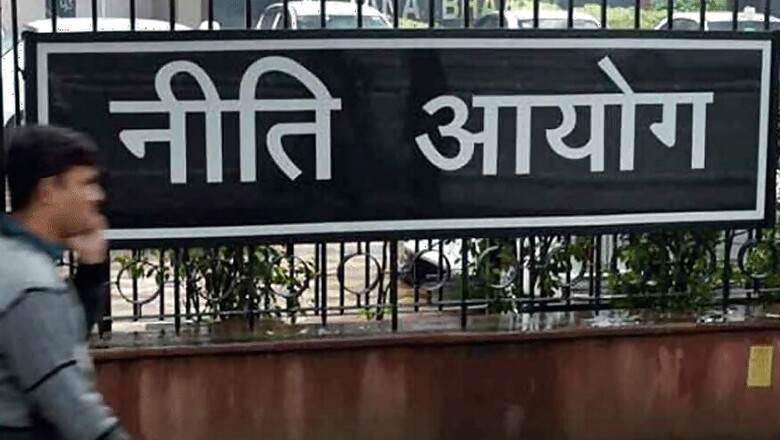
views
The Planning Commission/NITI Aayog has become a political football. The very first reform announced by Prime Minister Narendra Modi, from the ramparts of the Red Fort on August 15, 2014, was the abolition of the Planning Commission, followed by the announcement of its replacement, the NITI Aayog, on January 1, 2015. Now, the Congress has declared its intention to abolish the NITI Aayog if it comes to power after the elections.
The more fundamental question is whether or not the country needs a central body, close to the government, to guide reforms of the economy. Indeed, this was the ‘clean-sheet-of-paper’ approach taken when Dr Manmohan Singh commissioned a study of the Planning Commission in UPA-2. After the 1991 reforms, which opened the economy to private enterprise, many economists said the Planning Commission was a dinosaur from the Soviet-era. People said it was hanging around as a parking lot for side-lined politicians and bureaucrats. Singh felt that previous attempts since the 1980s to improve the Planning Commission only tinkered at the edges and a more fundamental review had become necessary.
Many persons from all sectors — civil society, business, and government — were consulted. There was unanimity that the Planning Commission needed overhaul. There was agreement that citizens of India would benefit if there was more alignment amongst government ministries, between the Centre and states, and amongst the states too. And there was consensus that an institution at the Centre that could induce more strategic thinking and more alignment amongst stakeholders would accelerate both, overall economic growth, as well as improvement of health, education, and livelihoods on the ground.
Singh concluded that the Planning Commission must become a ‘systems reform’ commission rather than an allocator of money, and an ‘essay (a force) in persuasion’ of stakeholders rather than a producer of plans. He was not able to see the reforms through. However, Modi took them up. The charter of the new NITI Aayog is fairly consistent with the study commissioned by Singh.
Modi, as the chief minister of Gujarat, had been very critical of the Planning Commission. He said, as did other chief ministers, that they did not need the Planning Commission to tell them how to spend their own money (what the Planning Commission ‘allocated’ to them being only a small part of their overall budgets). Yet, he came to the annual reviews because he hoped to get some good advice on how his state could be more effective, and he said he was disappointed. The Planning Commission lacked credibility to be an effective force of persuasion because it did not understand conditions on the ground. Nor was it able to provide a compelling view of the combinations of forces shaping India’s society and economy, which state governments and other stakeholders could use as a radar to set their own directions.
Along with credibility, a central organisation that serves as a radar for all must be trusted by all stakeholders. It must be impartial and be seen to be impartial. The states are governed by different parties who are in opposition to each other. Modi and some other chief ministers had complained that the Planning Commission favoured states where the Congress and its allies governed. It played up the achievements of the Congress and its allies and discounted the achievements of its opponents. The Planning Commission is not supposed to be a mouthpiece of the government in power, its critics complained.
Business leaders, who were consulted, said they would like the Planning Commission to be a credible radar, as mentioned before. While businesses were expected to set their own strategies, free from government controls, reliable insights into obstacles and opportunities over the horizon would be valuable for them to steer their course. Civil society wanted the Planning Commission to be a better listener, with an open mind, to common people with different perspectives — rather than laying out, from above, plans for them they did not comprehend or trust.
Thus, with inputs from many stakeholders, the self-critical Planning Commission left some ideas for the next government about the role a central institution could play to guide the progress of the country. As mentioned before, many of the core ideas have found place in the charter of the NITI Aayog.
There are many loud murmurs that while the NITI Aayog has made several improvements to the Planning Commission, it is far from fulfilling the expectations of it. Most troubling is the concern that the NITI Aayog has become a mouthpiece of the government. This has reduced trust in it and impacted its credibility.
It would behove the government to commission an independent evaluation of the NITI Aayog and obtain an unbiased evaluation of the progress it has made to fulfil the purpose for which it was set up. The NITI Aayog, as a ‘learning organisation’, should welcome this too.
(The author is a former member of the Planning Commission. Views are Personal)




















Comments
0 comment